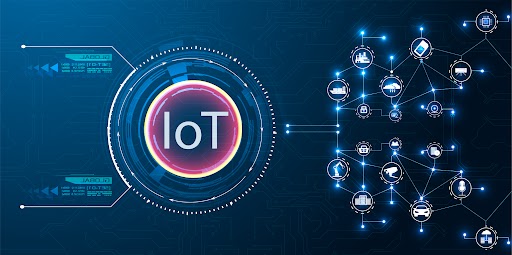Introduction:
The Internet of Things can no longer be called a technology of the future – it is here and now. As the COVID-19 crisis hit the companies with economic challenges and mandated closures, new developments have taken place in the arena of technological developments. The IoT market that stood at 250.72 US billion dollars in 2019, is expected to reach 1463.19 US billion dollars by 2027 growing at a CAGR of 24.9%. A significant increase in the demands has been seen in the healthcare and agriculture sectors for IoT devices. In our recently published comprehensive landscape report, we have taken a deep dive into IoT security, Industrial Internet of Things, IoT use cases across industries, and more. In this post, let’s talk about some of the top innovations that are being paved by IoT as we speak.
i) Battery-free sensors
Most of the devices come with a small battery life of approximately 10 years and going above that span is hard. The smaller the device, the smaller is the battery life. Though lithium batteries offer high reliability, voltage, and good performance, they have a short life span for usage and require replacement. However, this is changing. A better battery that derives its power from a mix of sources, consisting of indoor solar, thermal, and vibration is in the pipeline. The sensors that generate power to run on their own can have huge implications as the need for replacement will be cut down immensely and more can be deployed to be used in various fields.
The most important application of these sensors in the current times is to monitor temperatures, especially in storage facilities. They can be used as either standalone devices or part of huge computer systems to automate an entire building or all kinds of equipment and assets in it.
ii) Mesh Sensors
A mesh wireless sensor network is very different from a star network. It contains radio units known as nodes that communicate openly to self-organize and can share the information to central units called gateways. The way mesh differentiates from the star is that the nodes act as a repeater for each other and the data is passed through them before reaching the gateway. This is a huge utilization where a need for accurate information is required. A perfect device to gauge small changes in temperature and soil moisture over various temporal and spatial levels to maintain the longevity of crops in the fields. Mesh wireless sensors can also serve as the device to measure small changes in body movement with an unknown number of data points.
iii) Smart manufacturing with digital twins
Pandemic has affected the industrial supply chain in more ways than one. As manufacturing has become more local, development in logistics efficiency is on the rise. But then, what is a digital twin?
To understand the digital twin, we need to understand that it is a virtual representation of a physical object or a system from a natural environment to the world of computing. It is constructed in such a way that it gathers inputs from sensors receiving data from a real-world counterpart. In this way, the twin can simulate the object in a real-time environment, suggesting insights and solutions to potential problems.
Incorporating IoT solutions into the supply chain processes paves the way to smart automation. A robotic crawler to monitor temperature changes in ventilation, air conditioning, and heating-related procedures can fetch real-time data and help create a simulation. These simulations further help in predictive analytics for operational efficiencies.
iv) TinyML
TinyML, as the name suggests, is a type of machine learning that can shrink any kind of deep learning network to embed in hardware. However, how does this help IoT applications?
The microcontroller is a small, dedicated computer on a device to perform small tasks. TinyMLs help process complex deep learning algorithms directly on a microcontroller. Since TinyMLs use increasingly small amounts of power to operate, the range of the data collected by the sensors of an IoT device increases significantly.
TinyML on IoT devices is the next stage of evolution that the field of predictive analytics has been waiting for. In the manufacturing and supply chain operations, it can transform the capabilities of maintenance of equipment and can improve the location tracking of goods enhancing logistical efficiency. Its privacy and security-enabled features can be applied in the healthcare field for the better protection of patient data.
v) IoT on the Edge
The breakthrough of enormous amounts of IoT devices in various sectors has propelled massive amounts of data. Edge computing brings processing of these vast quantities of information closer to the devices. This helps in saving costs and reduces bandwidth usage. Activities like outbreak detection and contact tracing can be better monitored with edge computing. Through this mechanism, medical devices can process information continuously during the diagnosis.
Traffic management, edge video orchestration, real-time monitoring devices in industries, and building of smart cities, all seem possible, through the process of edge computing in IoT devices.
Conclusion
Smart cities, manufacturing, precision agriculture, and supply chain 4.0 are just a few revolutions that can be named that the Internet of Things has brought in this world. The amalgamation of various technologies of AI and ML with IoT is continuously shaping more developments. Natural language processing, pattern recognition, and predictive analytics is gaining more pace due to the vast amount of data that is collected from IoT devices. Future technologies will continue to bring in changes and IoT is the key to it. As the technologies develop, the scope of rapid transformation in the digital world has just started.


